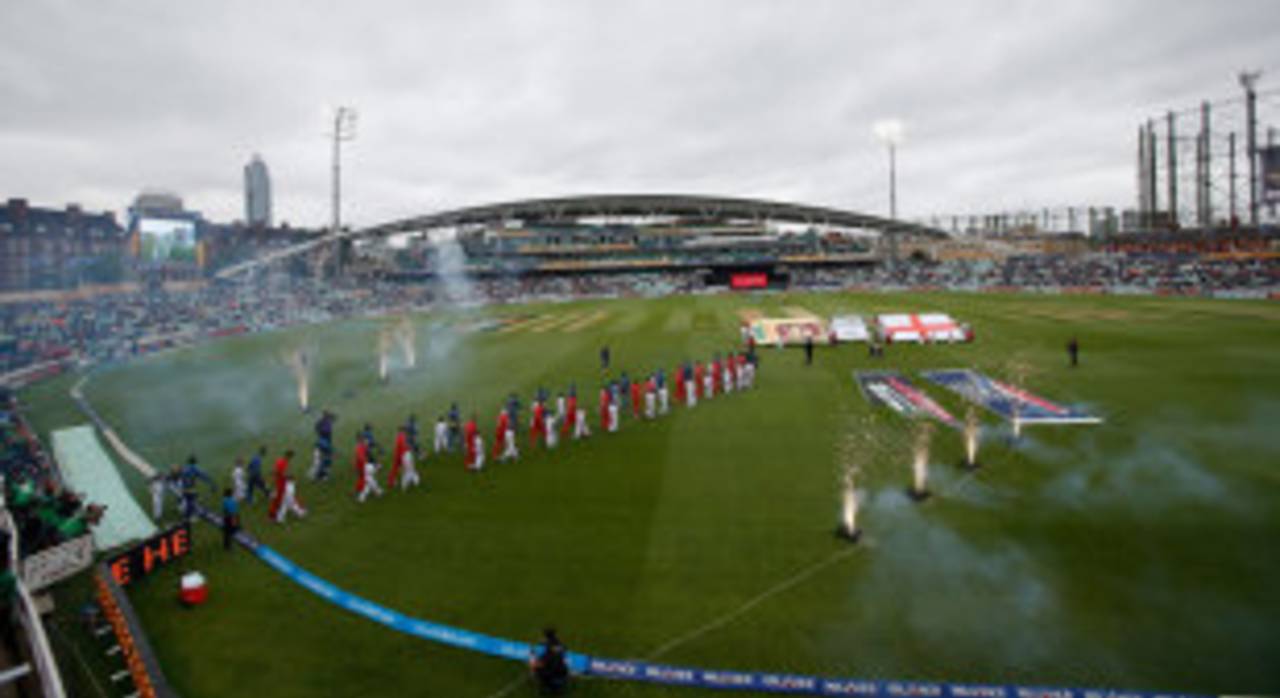Swing in the air and seam movement off the surface on damp green pitches are the first things that cross your mind when you think of cricket in England. As a batsman, you prepare to allow the ball to come to you instead of reaching out for it, unlike how one happily does while playing in the subcontinent. You tell yourself to not only play late in England but also in the second line, accounting for lateral movement off the surface.
The movement in the air and off the pitch makes even the most innocuous-looking medium-pacers a tough proposition, especially for batsmen from the subcontinent. While you may pick the line from the hand of the bowler, playing through the line is easier said than done.
The English summer can be divided into two halves - the pitches are greener and damper in the first half and get a little drier, and hence somewhat flatter, in the second half. The Champions Trophy, being played in the first half, the one that has been unusually wet and cold this season, promised to revive old memories. Pace bowlers were expected to rule the roost, spinners were supposed to be marginalised, and batsmen were to play defensive.
None of that has happened.
The opening encounter between India and South Africa
in Cardiff was a high-scoring affair, and it offered a preview of what was to follow. The ball has not moved in the air or off the surface, and batsmen have made merry. The fact that the ball hasn't deviated has allowed batsmen to play through the line and also on the up. They haven't needed to get their feet to the pitch of the ball or even to wait for the ball to come to them, for contact has been guaranteed if you gauge the length accurately.
The only thing the Indian batsmen have needed to be careful about has been the bounce: even the flattest pitches in England offer more than the ones on the subcontinent. But bounce can be a batsman's ally if it's not complemented by movement, which has been the case so far. Most of the
other matches may have not been 300-plus run affairs, but that has had more to with the quality of bowling and batting than the pitches.
Only six opening batsmen in 14 completed innings in this Champions Trophy have been dismissed caught by the wicketkeeper off a fast bowler. It further validates the theory that the pitches haven't offered much assistance to the faster men - despite two new balls being used in every innings. Spinners, on the other hand, have made a significant contribution in this tournament. They have not only taken
32 wickets in the first eight matches, they have also kept the batsmen on a tight leash, for their economy rate is significantly better than that of the quick men (4.12, against
4.93 for quick bowlers).
It's understandable that fast bowlers have taken more wickets (65), for they have bowled many more overs than the spinners have (more than 382 overs to the spinners' 229). The fact that spinners have played a consequential role shows that the pitches have had something to offer them. The new ODI rule of allowing only four fielders outside the 30- yard circle was expected to marginalise spinners, yet they has played a prominent role.
The big question doing the rounds in England is about why there has been such a drastic change in the nature of pitches, especially when it has nothing to do with the weather. For the Champions Trophy the ICC might have requested the curators to prepare slightly batting-friendly pitches, but what explains the flat pitches dished out for the ODI series between England and New Zealand?
I've been informed that there has there has been a conscious decision by the ECB to reassess their approach in ODI cricket. There has been a strong feeling, among the people who matter, that England are lagging behind in the 50-overs format because they play much of their cricket on bowler-friendly pitches in England, and so struggle to post or chase down big scores when they tour overseas. Even if their batsmen have the wherewithal to score quickly, they simply don't seem to have the knack of pacing their innings to do so.
In order to address their batting problems, they have stopped watering the pitches at home as much as they would do otherwise. The pitches in this Champions Trophy have borne a very brown and dry look. If you increase the temperature by 20 degrees, you could mistake the conditions for Wankhede or Lahore. England's attempt to join the bandwagon has tilted the balance quite a bit.
